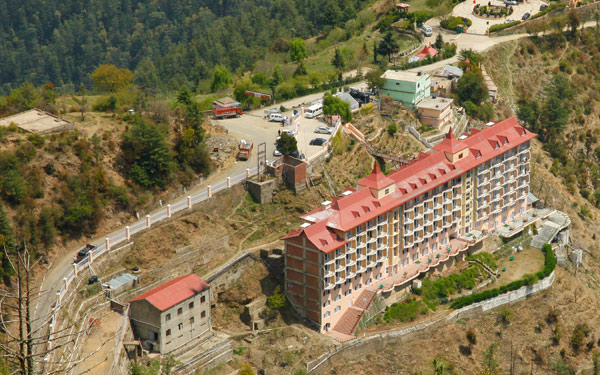|
|||||||||||||||
|
|||||||||||||||
Asiatic Lion
The Asiatic Lion grows to a height of approximately 90cm, with their length ranging from 200 - 280cm. Their long and hard tails grow to an additional length of 60 - 90cm. Lions can weigh in at between 200 - 275kgs. Their main prey species consist of Nilgai, Chital, Sambhar, Goats, Buffaloes and occasionally also other smaller animals. The lions of Gir have made it a habit of killing livestock and sometimes even camels. Their breeding season is timed along with the onset of winter in the months of October and November. Their gestation period is 3 and a half months, with litters ranging between 3 - 4 in number. The lionesses breed on an average of every two years and are ready to have their first lot of babies around the age of 30 - 36 months. They have a life expectancy ranging between 20 - 30 years. Just like their African cousins, the Asiatic males too have handsome manes, which are absent in the females. The Asiatic lions tend to have smaller manes than their African cousins. The Asiatic lions however have a bushier overall coat and also have longer tufts of hair at the end of the tail and on the elbow joints. The colouration of the manes vary from lion to lion. The only rare ones are the very dark manes, which according to a research done in Africa are the ones prefered by lionesses! Lions mostly live in large prides. These prides can sometimes have upto 3 adult males but it is always one that is the dominant leader. The males are known for their laziness and lordship like behaviour. The females do all the hunting, with the males only rarely joining in when the prey is a very large animal like an aggressive buffalo. However, once the kill is made, the males always get the first go at the meal. The bonding among a family of lions is extremely strong with aunts and sisters helping in the bringing up of all young. Females stay with the pride all through life, whereas the males tend to set out on their own around the age of three. They mostly lead solitary lives then onwards but have been known to also roam territories in pairs and trios. These bachelors are known to be the main threats to the dominant males leading their prides. They are also known to kill cubs to try and get the females into estrus once again. These bachelors are mostly brothers that left a pride together but individual bachelors have been known to team up with other individuals. Lions, unlike the tiger, hunt in groups. They collectively stalk their prey and have been commonly seen applying strategies that would do any army commander proud. Very often some of the females pinpoint a particular individual prey and chase it in the direction of other lionesses waiting in ambush. The prey is mostly killed by a quick, powerful bite to the spine or with the help of a classic choke grip, with the strong jaws of the lion cutting off air supply to the lungs. The Asiatic Lion has been declared the most endangered large cat species in the world. Their numbers ranging between 250 - 300, all concentrated in the same area, they are under the constant threat of being wiped out by some deadly epidemic. It is hoped by all conservationists that the governing authorities settle their differences of opinion on the best possible plan and take some action before it's too late to save one of the most magnificent beasts to roam the planet. Lions have always been considered the kings of the Jungle. But most of the people in the world think that lions are only found in the African continent. People haven't been mislead in this regard, the truth is that there aren't much lions left in the rest of the world. About 10, 000 years ago lions spanned vast sections of the globe, but as the human population started to increase, trees were cut and forests were cleared to make more land for people to live in. Now lions only in small fractions in some parts of the world. And Asiatic lions, a subspecies that split from African lions perhaps 100,000 years ago, are only found in the Gir wildlife Sanctaury of the Indian state of Gujarat. Residents Of Gir - The Maldharis Saving The Lions |
| Corporate Information | Partner with Us | Customer Care | Top Destination | Top Deals | ||||||||||
| About Us | Hotels in India | FAQ | Goa Tours | Goa Tour Packages | ||||||||||
| Our Team | Become a Affiliate | Contact Us | Rajasthan Tours | North India Tour Packages | ||||||||||
| Make My Trip Planner | Register your Hotel | Himachal Pradesh | Honeymoon Tour Packages | |||||||||||
| Board of Directors | Advertise with Us | Kerala Tour | Adventure tours India | |||||||||||
| Blog | Career | Pilgrimage Tours | Golden Triangle Tour | |||||||||||
| Holidays Packages India | Useful Links | All Destinations | North East India Tour Packages | |||||||||||









 The Asiatic lion, in India, is now found in only one pocket located in the Gir National Park of the state of Gujarat. There have been efforts made to relocate a small number of these lions to another park to try and ensure better survival chances of this majestic animal. However, these plans are yet to be put into action.
The Asiatic lion, in India, is now found in only one pocket located in the Gir National Park of the state of Gujarat. There have been efforts made to relocate a small number of these lions to another park to try and ensure better survival chances of this majestic animal. However, these plans are yet to be put into action. Gir Widllife Sanctaury is the last refuge of Asiatic lions in India and the lion population residing in the park is a little over 300. The whole coverage area of Gir Sanctuary is about 560-square-mile (1,450-sq-kms). Prey animals are also generally smaller in Gir than they are in Africa, and hunting groups tend to be even smaller. The lions themselves aren't as big as the African lions, and they have shorter manes and a long fold of skin on their undersides that many lions in Africa don't have.
Gir Widllife Sanctaury is the last refuge of Asiatic lions in India and the lion population residing in the park is a little over 300. The whole coverage area of Gir Sanctuary is about 560-square-mile (1,450-sq-kms). Prey animals are also generally smaller in Gir than they are in Africa, and hunting groups tend to be even smaller. The lions themselves aren't as big as the African lions, and they have shorter manes and a long fold of skin on their undersides that many lions in Africa don't have.